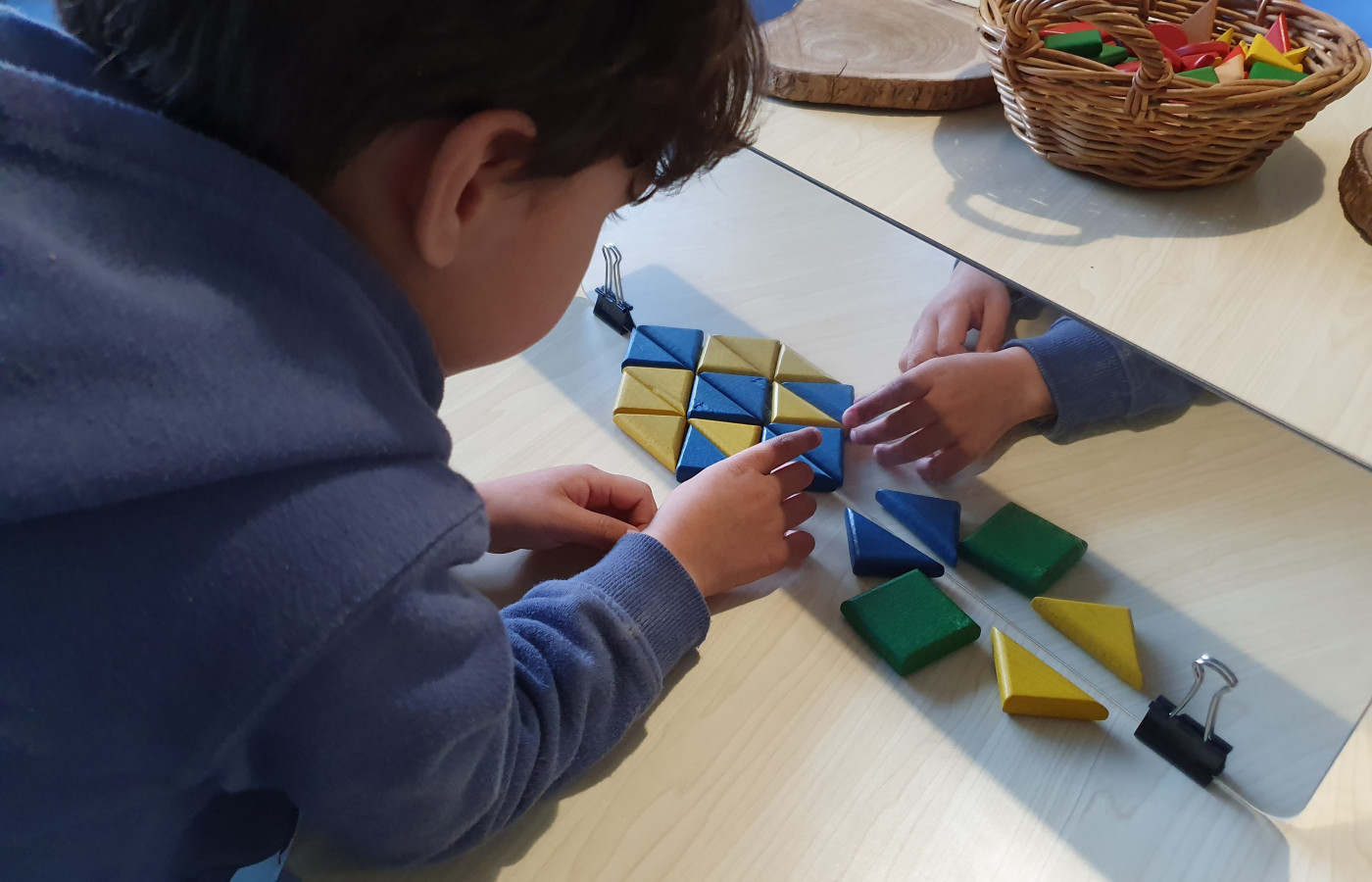Let's make a pattern!

Let's make a pattern!
Making a repeating pattern with objects in the home
Materials Required
- Loose parts (materials/items you can find in the home) - e.g. buttons, pegs, sticks, stones, leaves, lego pieces, small blocks, cutlery, beads, marbles, shells etc. (two of each item)
paper, crayons, textas, pencils
Play experience profile
-
Age:
-
Min Playtime15 - 30 Minutes
-
Skills
-
Energy LevelQuiet Play
-
Messiness Rating
-
EYLF Outcomes
Play Experience Preparation
Create a 'loose parts box' - Collect loose parts (items, objects) in the home - indoors and outdoors including items that are the same.Experience Steps
- Using your loose parts box, create an ABABAB pattern with the loose parts.
- Have your child copy the pattern or make the same pattern with different items from your loose parts box.
- Have your child extend the pattern: ask your child "What do you think comes next?"
- Play a guessing game - have your child close eyes and take a part of the pattern away - ask "what part is missing?"
- Repeat game and take different parts of the pattern away.
- Make a different pattern and repeat steps.
- Add a challenge - increase the difficulty: make ABBABBA, ABCABC patterns.
- Encourage your child to create the same type of pattern using different items.
- Encourage your child to create their own pattern and describe it.
- Encourage your child to draw their pattern.

What to talk about, or questions to ask during the experience
- Let's make a pattern
- Tell me about your pattern. Describe it.
- What do you think comes next in your pattern?
- What do you think is missing from the pattern?
- I wonder what else we can find to make a pattern?
- This is a ABABAB pattern (use labels for the pattern of the loose parts - e.g. 'red button, block, red button, block').
- This is a ABBABBA pattern (use labels for the pattern of the loose parts - e.g.'stone, stick, stick, stone, stick, stick').
Build on this...
- Making lots of different types of patterns with different items and objects.
- Looking for patterns in nature - going on a pattern hunt.
- Looking for patterns in the home - going on a pattern hunt.
- Take photos of patterns in nature.
- Using digital technology (e.g. mobile phone, computer) to search for examples of patterns in nature and human made forms in our environment.
- Drawing patterns with lines and shapes.
WHO guidelines for physical activity and sedentary behaviour
Provide evidence-based public health recommendations for children, adolescents and adults on physical activity.
Learn more
Provide evidence-based public health recommendations for children, adolescents and adults on physical activity. Learn more
Being physically active by walking around the house, inside and outside to look for loose parts.
EYLF Outcomes
The Early Years Learning Framework has been designed for use by early childhood educators working in partnership with families, children’s first and most influential educators.
View PDF
The Early Years Learning Framework has been designed for use by early childhood educators working in partnership with families, children’s first and most influential educators. View PDF
- Children transfer and adapt what they have learned from one context to another
- Children begin to understand how symbols and pattern systems work
- Children develop dispositions for learning such as curiosity, cooperation, confidence, creativity, commitment, enthusiasm, persistence, imagination and reflexivity
EYLF Principle
Principle 3: High expectations and equity. Children progress well when they, their parents and educators hold high expectations for their achievement in learning.
EYLF Practice
Practice: Intentional teaching. Intentional teaching is deliberate, purposeful and thoughtful. They use strategies such as modelling and demonstrating, open questioning, speculating, explaining, engaging in shared thinking and problem solving to extend children’s thinking and learning.
A pattern occurs when a sequence of two or more items begin to repeat themselves, which is key to a sequence being described as a pattern (MacDonald, 2018).
MacDonald, A. (2018). Mathematics in early childhood education. South Melbourne: Oxford University Press.
Developing pattern awareness with young children: https://nrich.maths.org/13362
Patterns in everyday activities: https://prek-math-te.stanford.edu/patterns-algebra/patterns-everyday-activities
Early Start Discovery at Home - Making mandala patterns: https://www.earlystartdiscoveryspace.edu.au/do-it-at-home-mandala-making/
Author:


